Gilgit-Baltistan is heaven on earth and this heaven is bestowed with the spectacular wildlife as well. It is home to the mighty golden eagle, brown bear, red fox, elegant Doyan markhor, graceful Himalayan yak, delicious trout fish and God’s one of the most magnificent creation, the elusive snow leopard also known as “Grey ghost”, “Ghost of the mountains”, “King of the Himalayas” and “Protector of Himalayan ecosystem”. Snow Leopard is one of those mysterious and mythical creatures on earth.
Unfortunately snow leopards are vulnerable to extinction. By some estimates there are fewer than 8,000(approximately 3000 to 7500) snow leopards in their natural habitat. The worrying thing for Pakistan is that it is left with approximately 200 snow leopards.
Some researchers predict that by 2040 world will see a decline of 10% in their population and by 2070 its natural habitat will shrink to one-third. A natural habitat is a place or environment area where specific species lives.
The snow leopard is absolutely magnificent. It represents really what endangered species are all about
Jack Hanna
Following topics will be covered in this post:
- Facts About Snow Leopards
- Major Threats To Snow Leopards Survival
- How To Conserve Snow Leopards
- Snow Leopard Conservation Using Artificial Intelligence
01. Facts About Snow Leopards
Snow leopard is one of the rarest species in the world. They live in the worlds highest mountain ranges across Central Asia & South Asia in alpine echo system up to 20,000 feet where air has a very low levels of oxygen.
Snow leopards can sustain the temperatures as low as -40C. They have the densest fur among all the cats nearly 26,000 hairs per square inch to keep them warm in such extreme conditions.
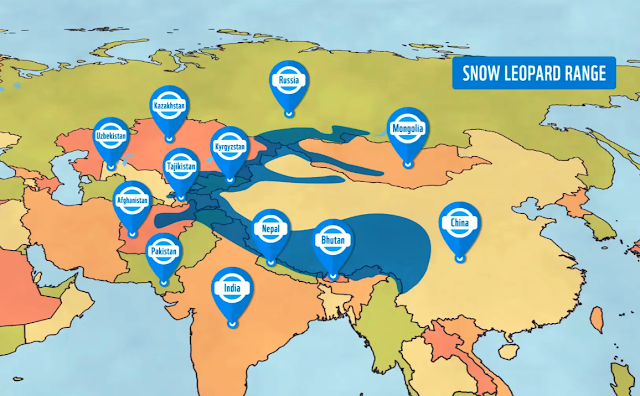
Their giant paws help them to distribute weight in a way that they can walk on top of the snow instead of sinking in or in other words act as snow shoes. While doing rest snow leopards wrap their bodies with long tails like a blanket to remain warm.
Snow leopard tails act as balancing tools. The tail can grow up to 90% as long as its body. It helps them balancing when they ascend and descend rugged steep slopes especially while chasing prey.
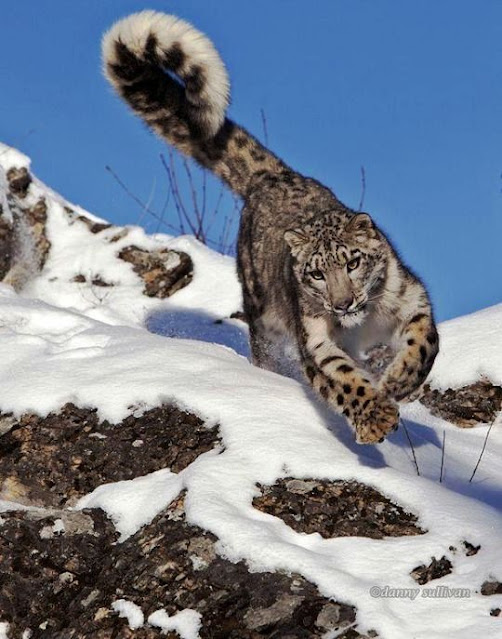
02. Major Threats To Snow Leopards Survival
Following are some of the threats that these rare species are facing.
01. Loss Of Their Natural Habitat
With the expansion of human population on mountains, the natural habitat of snow leopards is decreasing day-by-day because people are shifting gradually towards their natural habitat.
Snow leopards are considered as very shy species and it is very difficult to understand their lifestyle. They live in very large territories and their home range can be as long as approximately 1600 square kilometers to 1800 square kilometers. They don’t like any sort of human presence in their home range.
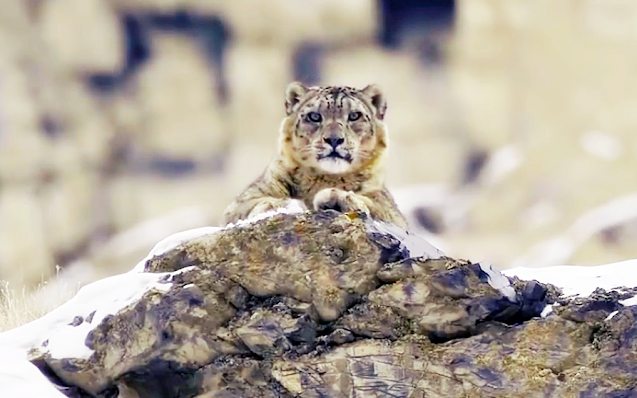
02. Loss Of Natural Prey
As human population is expanding the population of domestic livestock like goats, sheep, yaks, cows is also increasing very rapidly. Increased ranching and herding have turned the meadows and grasslands into sandy and rocky plains, as a result there is less food for the snow leopards prey(Blue sheep, markhor, ibex) means domestic livestock is kicking out the blue sheep, markhors, ibexes, hence declining their population massively. So it will be so hard for snow leopards to survive without their natural prey because on average snow leopards prey after every 8 to 10 days. Ranching is the practice of raising grazing domestic livestock on large farms.
The second reason for loss of prey is humans. Though the wild goats like blue sheep, ibexes, markhors are legally protected animals, but local people are furtively hunting them regularly. Half a century ago the mountain ranges(Karakorum, Himalayas and Hindukush) were used to be filled with these wild goats(Ibexes, blue sheep, markhors) like one could easily witness them with naked eye, but our ancestors hunted them so brutally that they are rarely found on these mountains. Some of the rare breeds of wild goats like the famous Marco Polo sheep, even disappeared from these mountain ranges.
So both the domestic livestock and humans are putting the survival of snow leopards at stake by squeezing out and hunting these wild goats because less prey means difficult survival.
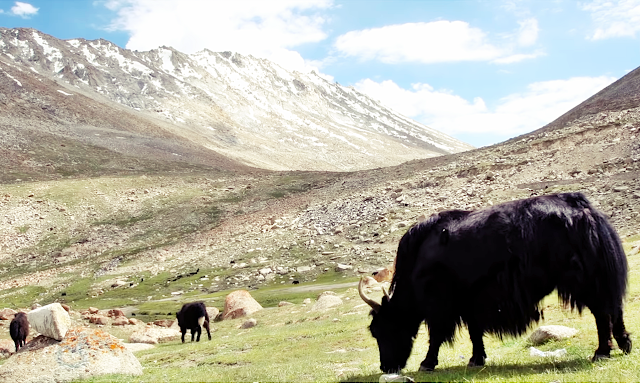
03. Tit For Tat: Men’s Revenge
Most of the people on these mountains are herder families means their livelihood heavily depends on their domestic livestock like goats, sheep, yak, cows, etc. As I’ve said above, on average snow leopards hunt after every 8 to 10 days and what if they don’t find their natural prey? Answer is simple, they are subjected to conflict with humans.
With the scarce of natural prey snow leopards attack domestic livestock particularly goats, sheep, and calves mostly at night.
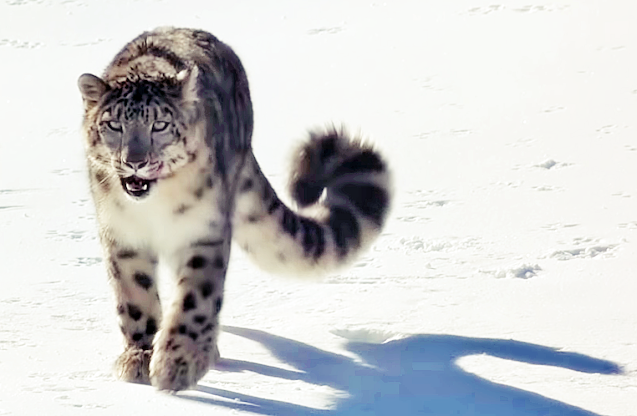
There have been times when a single snow leopard hunts 40 goats and sheep in just seven days by getting benefit of vulnerable livestock shelters. The thing that further infuriates the livestock owners or herders is that, at times snow leopard only sucks the blood by hunting them in a row one-by-one and leaves without eating them.
Hunting of domestic livestock by snow leopard is a devastating financial loss to herder families, so in retaliation these herders kill snow leopards to save their livestock in future and try to compensate their financial loss by selling the body parts and skin of snow leopard. It is the poor snow leopard who ultimately pays the price in this human-wild conflict.
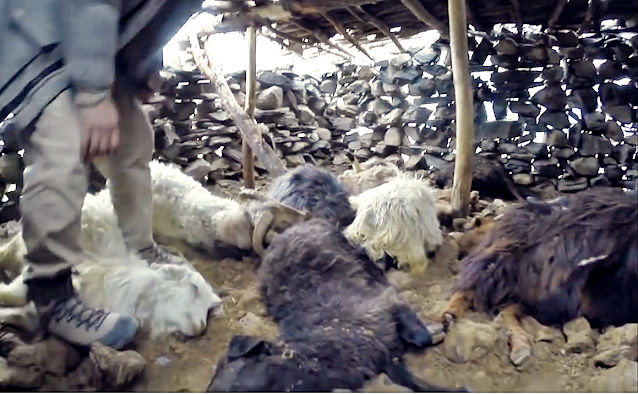
04. Poaching
Poaching is the illegal hunting or catching of species that are legally protected. Snow leopard is legally protected animal and part of the natural heritage of Pakistan as well, but its poaching hasn’t been stopped completely.
Snow leopard’s body parts are used in the making of so many Asian traditional medicines and its skin has got huge demand in the fur trade. The fur trade is a global industry dealing in the acquisition and sale of animal fur.
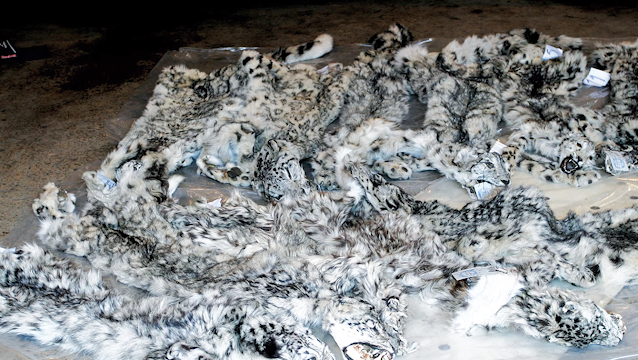
05. Climate Change
Today world is facing a rapid change in climate change and we have already witnessed the impacts on these high-elevation mountain ranges. Increasing temperatures are not only vulnerable to these mountainous people, but also to wildlife as well.
Climate change might impact the natural habitat of snow leopards by reducing their home ranges and food sources. Climate change is a long-term shift in global or regional climate patterns. Often climate change refers specifically to the rise in global temperatures from the mid-20th century to present.
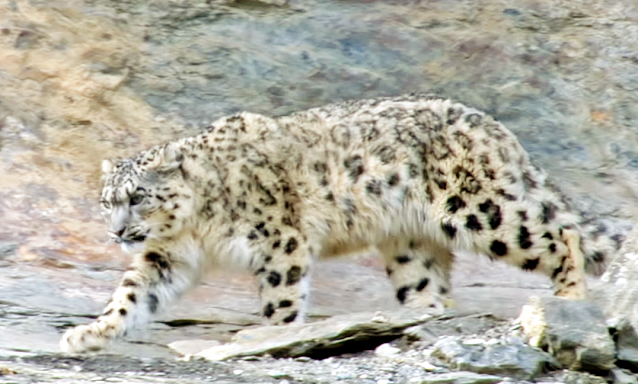
03. How To Conserve Snow Leopards?
The Government must implement a sustainable community-based conservation efforts to protect snow leopards disappearing entirely. Government can take the following steps for the conservation of snow leopards.
01. Stop Poaching Of Snow Leopards
One of the main reason for declining population of snow leopards is poaching. Government must stop poaching at any cost by maintaining various checkpoints and surveillance system so that any one involve in this illegal activity will be caught.
There should be harsh punishments for those who will be involved in this activity. According to the statistics on animal poaching from the World Economic Forum, illegal wildlife trafficking is a worldwide business worth between $7 billion and $23 billion annually.
02. Scale Up The Population Of Snow Leopard’s Natural Prey
There are two ways Government can scale up the population of snow leopard’s natural prey(Blue sheep, ibexes, markhors), firstly, by setting limits on domestic livestock herding and secondly, by stopping the illegal hunting of wild goats(Blue sheep, ibexes, markhors).
Herders send their domestic livestock particularly larger ones like yaks, cows, etc, to the natural habitat of wild goats and they graze most of the stuff leaving behind sandy and rocky plains, as a result lot of wild goats die of hunger or migrate to other places. Government should supply the necessary food for the domestic livestock so that the herder families won’t send their livestock to natural habitat of wild goats for grazing.
Like snow leopards, wild goats are also legally protected animals, but local people are hunting these wild goats regularly without permission. Government must impose severe punishments for those who hunt wild goats.
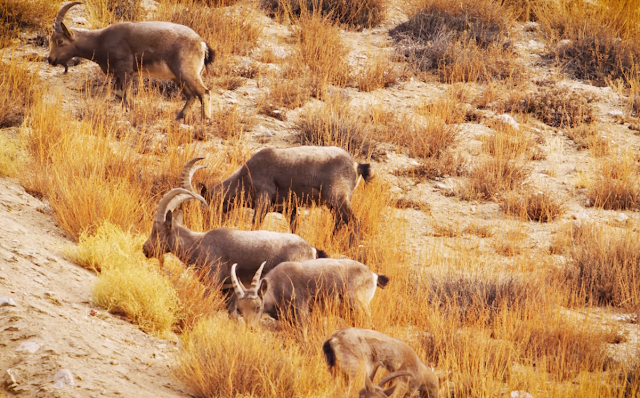
03. Whistleblowing Scheme For The Protection Of Wildlife
A whistleblower is a person who reveals secretive information about an activity that is considered illegal, unethical, and as a result he gains certain commission or a reward. Logistically it is not possible for the Government to monitor all the wildlife, but by introducing a whistleblowing scheme Government can catch culprits and reduce the poaching of snow leopards and hunting of wild goats to a greater extent.
04. Predator Proof Corrals For Domestic Livestock
Predator proof corrals for domestic livestock can reduce the conflict between herder families and snow leopards. Most of the livestock shelters are insecure and vulnerable that invite the skillful snow leopards to hunt their domestic livestock.
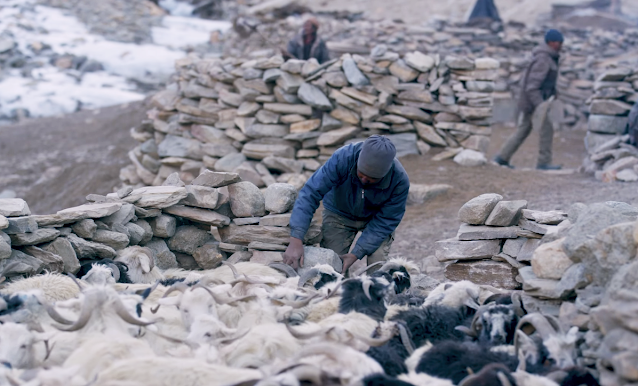
Herder families are always aware about the fact that snow leopard could attack their livestock, but nevertheless they make insecure and vulnerable shelters, why? Do they want a pretext to hunt snow leopard by saying that, “Snow leopard has killed their livestock and caused a financial loss to us and in retaliation we killed snow leopard.”
Government must insure that there should be predator proof corrals for domestic livestock so that there will be zero chance for snow leopards to hunt domestic livestock.
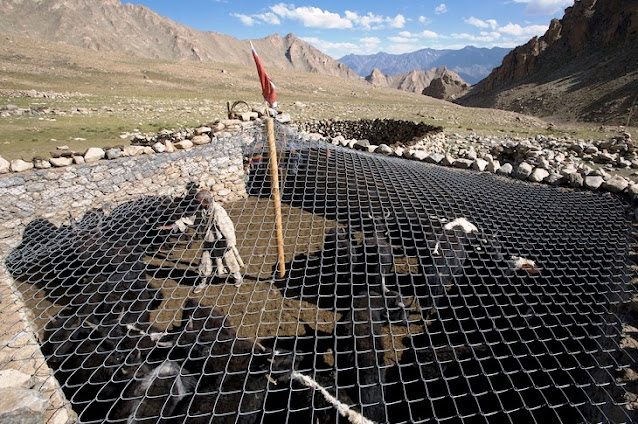
05. Alternate Income Resources For Herder Families
Government must conduct free trainings and introduce alternate income resources like crafting, woodworking, modern education, etc, to herder families because their main source of income is only their livestock and they are scaling up the population of livestock day-by-day, as a result livestock are interfering in the natural habitat of wild goats.
06. Livestock Insurance Program
Government must introduce a livestock insurance program to compensate the financial loss of herder families in case snow leopards kill their domestic livestock. This will also reduce the conflict between herder families and snow leopards.
07. Awareness Campaign
Government must run awareness campaigns that how important wildlife is for our country and for our future generations. The campaign should target not only the herder families but every citizen and particularly all those who are involved in poaching and hunting.
08. Fund Raising
There could be an organization or foundation who would collect funds from local communities or herder families to pay compensation in case if there happens a financial loss, but the question is, do local communities and herder families have enough income that they can participate in fund raising activity? Most probably not. So what Government can do?
Government can do two things, firstly, raise funds at national level and secondly, at global level because protection of wildlife is a global challenge and people from all over the world would love to donate funds for the protection of these endangered snow leopards and wild goats. If people are properly educated about importance of protection of wildlife they will surely donate money.
These funds can be utilized for the protection of wildlife particularly snow leopards and for the welfare of local communities and herder families.
09. Snow Leopard Foundations Should Collaborate Together
PSLEP(Pakistan Snow Leopard Foundation), Snow Leopard Conservancy India, Snow Leopard Trust China, WWF, UNDP, IUCN, etc, should collaborate together to come up with the best solutions and latest technologies to protect these endangered species from disappearing.
04. Snow Leopards Conservation Using Artificial Intelligence
Artificial Intelligence is the field of computer science. It is also called machine intelligence. It enables machines to take decisions or perform tasks like intelligent humans. It works by combining large amount of data often called as Big data with fast processing, intelligent algorithms or rules allowing the software to produce useful information or intelligence from various patterns.
Technology is rapidly shifting towards AI(Artificial Intelligence). Today industries and experts are finding the solutions in AI to tackle climate change.
AI is being used to combat poaching and saving biodiversity around the world. AI along with the new technologies can be used to gather the data in predicting the behavior of snow leopards and their population to protect them and also to track poachers and poacher traps. The data gathered from unmanned aerial vehicles(UAVs) and surveillance cameras combining with the machine learning techniques or image recognition technology helps in predictive analytics to stop poaching before it happens and predict where snow leopards are likely to migrate.
In this picture you can see that poachers have been identified while they are moving. AIs 80% to 90% predictions are found to be accurate in identifying poachers, poacher traps and hunters. Algorithms use historic field data and satellite information to predict those areas where poachers are more likely to set traps and hunt.
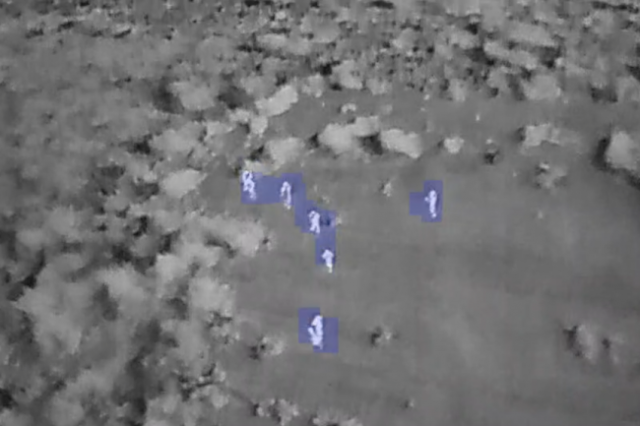
Artificial Intelligence scans through hundreds of thousands of images. It will look for those features that identify snow leopards and separate those images which have snow leopards with those who don’t have snow leopard images in few minutes instead of days. It automatically analyze images and create a database.
So using Artificial Intelligence you can easily track the activities and count population of snow leopards without actually climbing rugged mountains and manual work.
This is how Microsoft AI tracks snow leopards.
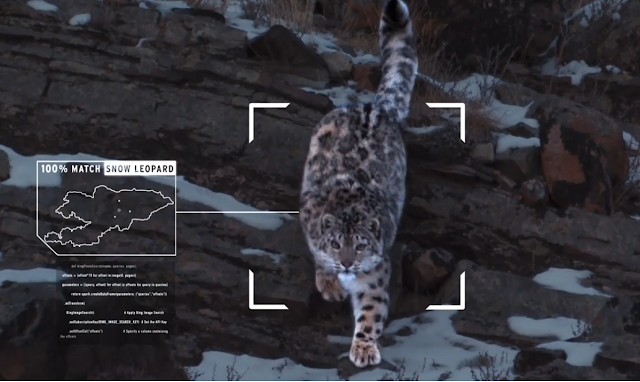
Former Techniques
Few years backs snow leopards used to be tracked by following two techniques:
- GPS Collars
- Camera Traps(Still in use)
01. GPS Collars
GPS collars are used to track animal migration for research. In this technique, the GPS data is sent to satellite then from satellite it comes to some research lab and then people apply data science or do classification. The drawback of this technique is that it is not scalable, tough and time wasting.
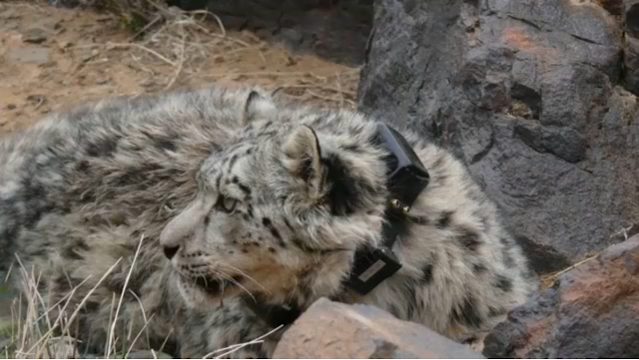
The home range of snow leopards is approximately 1600 square kilometers and they live in the highest elevations of the world in rugged mountains. It is very hard to spot a snow leopards in their natural habitat and imagine how difficult it would be to catch a snow leopard in these mountains and attach GPS collars with them. It will take decades to find and catch snow leopards in such rugged mountains and unfortunately snow leopards are endangered species and we don’t have so much time. So we need more scalable approach to track snow leopards.
02. Camera Traps
In this technique hundreds of modern digital cameras are installed in various points to track snow leopards. Cameras take hundreds of thousands of images even millions when triggered by motion or infrared sensors when animals goes by.
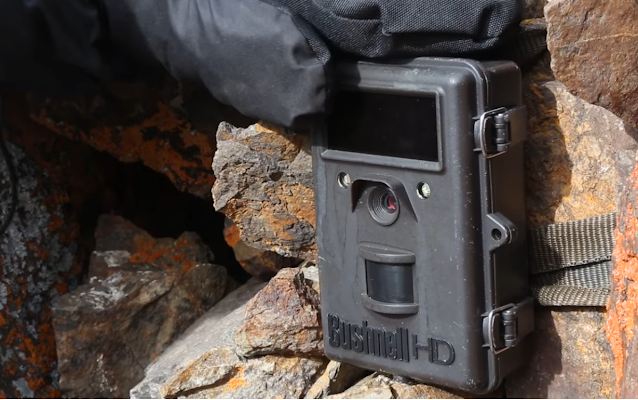
From time to time humans have to take surveys to collect these images from all those installed cameras by putting their lives at risk, climbing the rugged mountains. These images are then assigned to their limited staff to classify snow leopards images and other animals images in labs.
Going through every image is a very tedious and exhausting task. These cameras can’t differentiate snow leopards with other animals, means any animal like fox, wolf, ibex, blue sheep passes from them they will capture. Every single survey costs hundreds of thousands of dollars. Again with this technique it will take decades to count the population of snow leopards and unfortunately we don’t have so much time, we need more sophisticated and scalable technology, which is of course Artificial Intelligence.
We all should work together and raise awareness among masses to protect these rare endangered mountain ghosts to keep them for our future generations.
Well the thing is, once you have a snow leopard it’s difficult to go back. Everything is going to be slightly disappointing. It’s very telling what your choice would be. Because that’s probably how you see yourself. We used to play that game as kids and you’d say if you were animal what would you be and it’d usually be the opposite of what it should be. But all animals have got their virtues. You know, cockroaches got virtues.
Daniel Craig
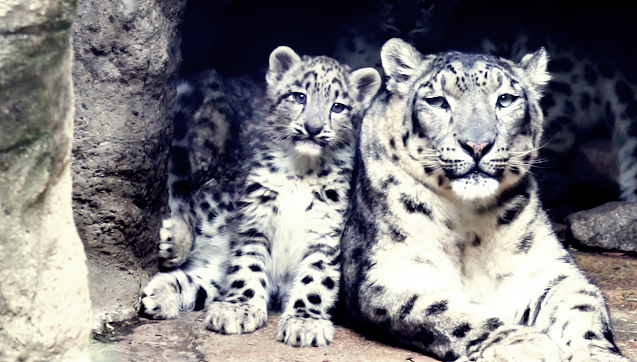
If you like this post don’t forget to share with other people. Share your feedback in the comments section below.
Also Read

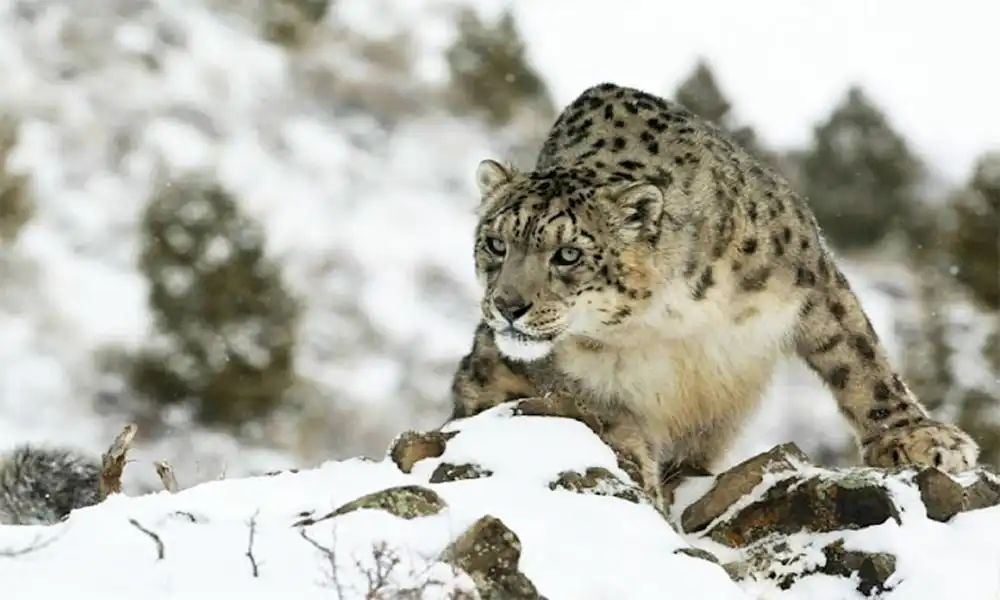





Leave a Reply